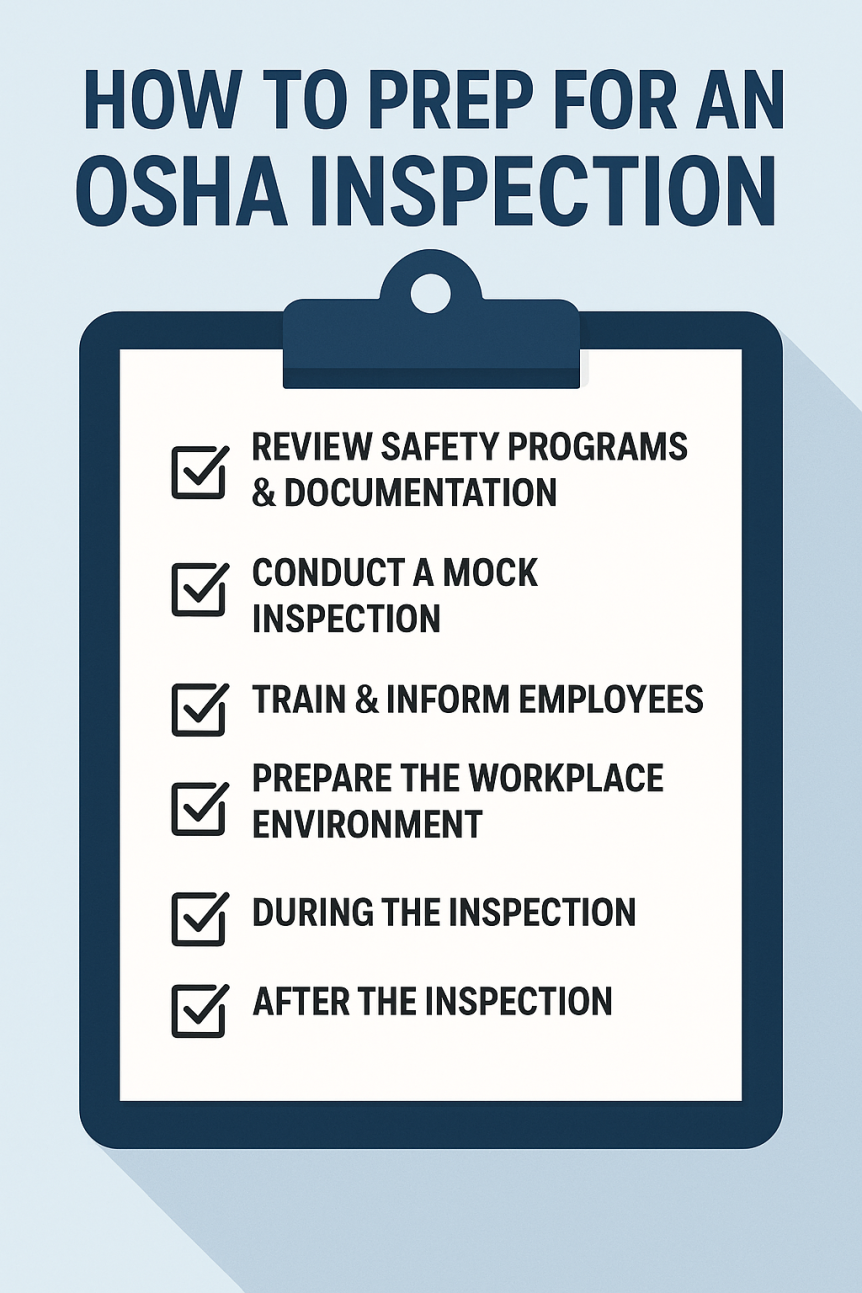An unexpected OSHA inspection can feel intimidating, but the truth is that preparation is the key to confidence. By addressing workplace safety proactively, you not only protect your employees but also minimize the risk of fines and violations. Here’s a complete guide on how to prep for an OSHA inspection and keep your workplace compliant.
Understand What Triggers an OSHA Inspection
OSHA inspections are typically prompted by specific events. Common triggers include employee complaints, serious accidents involving hospitalization or fatalities, programmed inspections in high-risk industries, and follow-ups from previous violations. Knowing these triggers helps you anticipate when an inspection might occur.
Review Safety Programs and Documentation
Proper recordkeeping is essential. Keep your OSHA 300 log of injuries and illnesses up to date. Ensure written safety programs are available for hazard communication, lockout/tagout, respiratory protection, and emergency action. Maintain accurate employee training records, equipment inspection logs, and make sure safety data sheets (SDS) are accessible.
Conduct a Mock Inspection
Walking your facility with a compliance mindset is one of the best ways to identify hazards before OSHA does. Look for common violations such as blocked exits, missing machine guards, improper PPE use, poor housekeeping, or unlabeled chemicals. Address issues on the spot and document corrections for proof of diligence.
Train and Inform Employees
Employees should be aware of their rights and responsibilities during an OSHA inspection. Provide training on how to respond to inspector questions truthfully and concisely. Assign a company representative to accompany inspectors and ensure consistent communication.
Prepare the Workplace Environment
A safe and organized workplace is your best defense. Ensure emergency equipment like fire extinguishers, first aid kits, and eyewash stations are accessible. Confirm personal protective equipment (PPE) is available and being used properly. Clear clutter, maintain signage, and make sure exits are unblocked.
During the OSHA Inspection
Always greet inspectors professionally and verify their credentials. Accompany them on the walkthrough and take notes or photos of any issues they point out. Provide requested documents but avoid volunteering additional information unless required.
After the Inspection
The closing conference will outline potential issues. If citations are issued, correct hazards quickly, post citations where employees can see them, and consider whether to contest citations within the 15-day window. Timely corrective action demonstrates responsibility and can reduce penalties.
Final Thoughts
Prepping for an OSHA inspection is about building a culture of safety, not just avoiding fines. When your workplace is consistently compliant, inspections become less stressful and more of a validation of your efforts. Consider scheduling third-party safety audits or mock OSHA inspections to catch issues early and maintain readiness.
Pro Tip: Utilize OSHA recordkeeping software to simplify compliance. Digital tools make it easier to track incidents, generate OSHA 300 logs, and maintain training records — saving time while ensuring you’re always inspection-ready.

